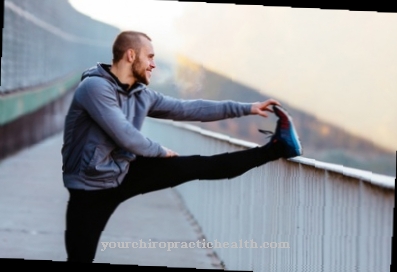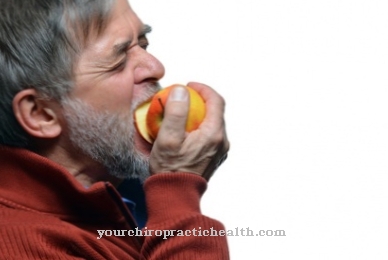The elegance and beauty of the body are evident in fluid and harmonious movements. A ballet dancer, for example, controls her body perfectly. She knows how to control her muscles in such a way that every part of the body is brought into a structured image for the viewer. The whole body focuses on conveying a statement, an interpretation without words. The grace can be experienced in the geometric forms of the movements. All of this is possible through the Body tension. However, it is not only essential for complex movements but also for a healthy body in general.
What is the body tension?

Agonists and antagonists are also players and opponents within the muscles. When it comes to the muscles of the limbs, it becomes clear that after every action (lifting) there is a reaction (lowering, lowering). On the trunk, the muscles of the chest and abdomen are physiologically inseparable from those of the back. If the trunk is bent, it must be straightened up again. If the person sits down, the upper body of the back and abdominal muscles are held equally stable and thus vertical.
The forces from outside that threaten to twist the body are opposed by a force. In strong winds, the body braces against it. The wind tears your arms and legs, reinforced by your clothing. Body tension is responsible for ensuring that people do not buckle or fall and at the same time, for example, do not let go of their bags.
Since humans separated physiologically from their ancestors millions of years ago, they have tried to stabilize their body tension in an upright position.
Function & task
More than 650 muscles move the body and mostly the bones, apart from the nostrils, auricles or the frown and the abdominal muscles. From head to toe, the muscles also determine a person's physiognomy. Statistically speaking, an athlete has a different appearance than a construction worker or an interior designer.
All muscles play together and show typical shapes. Stringy legs vs. thick calves, thin neck vs. Bull neck, elongated bony vs. bulging, constantly curved fingers indicate different body tensions.
In the resting position or rest periods, the above-mentioned groups of people have a specific basic tension in their muscle tissue, the tone. The body adapts to normal work, in a kind of 'operating voltage' and also imitates it in phases of rest.
In behavioral biology from our past, this is explained by the following necessity: The Stone Age people had to chase after or escape the game, ambush it, sneak up on it or pick berries from a great height, beat hides softly and often sleep while sitting. A basic tension in the muscles always had to be present for safety reasons.
The correct interaction of the muscles still allows the body to balance on the longboard and on the rope. With skillful leg movements, a ballet dancer remains in the pirouette and thus avoids the danger of falling. The body has acquired the skill to absorb a movement (even a wrong one). Body tension is responsible for successful accident prevention.
The individual strands of a muscle are reached and traversed by nerves. They come either from the spinal cord, a switching point for initially unconscious reactions, or from the brain. Electric shocks are generated there and the muscles willingly respond with a previously deliberate movement. If the consciousness is not impaired, such as stress or shock, the muscle reacts adequately.
Proper body tension allows us to swim, climb or ride, ski or play tennis. With the start of training for a sport, the path begins to load the muscles evenly. Remaining in a push-up or alternating between straining and stretching the arms and legs in the side support strengthens all the muscles in the core area.
The newly gained body tension is enabled to correct possible misalignments of the spine. The symptoms generally decrease, tension relieves, headaches become less common, the body stretches. With the new appearance, self-esteem also grows.
You can find your medication here
➔ Medicines for painIllnesses & ailments
The pyramidal system in the brain controls the movements of mammals. In humans, it is particularly well developed and can be easily recognized by a prepared brain stem. If there is a malfunction in the transmission of stimuli, the neurons (nerves) switch insufficiently. The corresponding region of the addressed muscles cramps.
Tensions with other causes cause pain in the neck and shoulder area, for example. A one-sided posture, e.g. caused by an unfavorable position of the work object (screen at the wrong height), stresses the spine on one side.
Several factors can lead to the condition of conversion disorder. Tension and constant stress should be mentioned here. In the deliberate defense against the attacking stimuli classified as dangerous, the body performs an act of jumping. Instead of answering verbally, the body responds with a silent convulsion. This can trigger further shock, anger, and deeply felt guilt. In the most difficult case, identity (what am I?) And motor skills (how do I move now?) Drift completely apart. The patient makes movements that are completely inappropriate for the particular situation.
More than half of the people suffer from a psychosomatic disorder, also known as a somatoform disorder, for at least a short time. Here the resting tone increases in height, which makes pain felt.
Diseases of the musculoskeletal system, which have always been known in folk medicine, are based on incorrect, i.e. one-sided, stress on the muscles. Tension and thus back pain, for example, are a result.
If the muscles remain tense, there is a risk of soft tissue rheumatism. Osteoarthritis in incorrectly loaded joints and herniated discs can also lead to chronic pain. Physiotherapeutic treatments in these cases point in the direction of new body tension to be achieved.


























